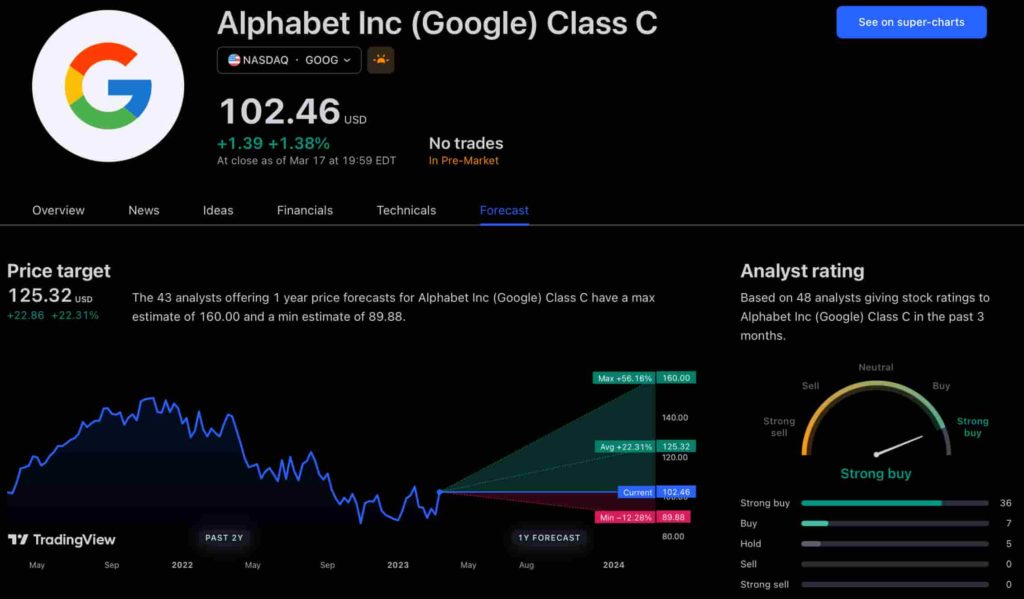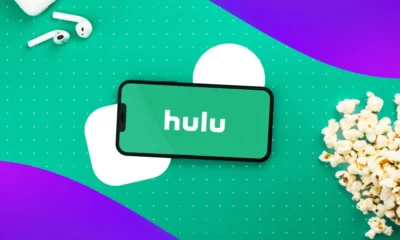The new app is called watchGPT and as I tipped off already, it gives you access to ChatGPT from your Apple Watch. Now the $10,000 question (or more accurately the $3.99 question, as that is the one-time cost of the app) is why having ChatGPT on your wrist is remotely necessary, so let’s dive into what exactly the app can do.
NEWS
Google: How Long it Takes for Disavow File to Affect Rankings

Google’s John Mueller was asked in an Office-hours hangout about a bad outcome from using Google’s link disavow tool. They uploaded a disavow file and within days their rankings collapsed. Mueller answered the various questions and then addressed the timing between uploading the disavow and the ranking changes, in the process revealing how long it takes for Google to work the contents of a disavow into the algorithm.
Disavow Tool Caused Ranking Collapse Within Days?
The person asking the question asked several questions that reflected various theories of why a disavow file might trigger a complete collapse in rankings.
Chief among these ideas was whether using the disavow is in itself a negative signal and how long does it take to get rid of a “black mark” for using the disavow tool.
Here is the question:
“Does using the disavow tool raise a flag in the algorithm and trigger a soft penalty on a website for possibly engaging in link building in the past?
We’ve used this tool to remove hundreds of spammy links and our site collapsed a few days later.
Should we remove the disavow tool and how long will it take for a site to return to normal traffic and ranking?
Or is there a permanent black mark against this website for using the disavow tool?”
Google’s John Mueller Discussing Ranking Effect from Disavow Tool

No Penalty for Using the Disavow Tool
Google’s John Mueller affirmed that there was no penalty for using the disavow tool.
“No there is not any kind of penalty or black flag or mark or anything associated with using the disavow tool.”
He then went to assert that the disavow tool is a technical tool for indicating links that the publisher doesn’t want to be associated with their site within Google’s systems and that’s all.
He also assured the publisher that the links in a disavow tool doesn’t indicate past bad behavior because a lot of times those are just links publishers are worried about.
“And it doesn’t mean that you created those links. It can be something that you found where you’re really worried that Google might get the wrong picture for your website.”
No Need to Use Disavow Tool for Random Links
Mueller next reassured the publisher (as he has many other times) that the disavow tool doesn’t need to be used for random links that are discovered.
He did recommend the use of the tool for links that look like the publisher might be responsible for.
“But if you’re seeing something where you’re saying, well I definitely didn’t do this and if someone from Google manually were to look at my website they might assume that I did this, then it might make sense to use the disavow tool.”
A Disavow File is Not an Admission of Link Building Guilt
Mueller again reassured the publisher that filing the disavow is not assumed by Google to be an admission of past wrongdoing in terms of link building.
“…it doesn’t mean that you did it or it’s not a kind of a sign that oh you’re admitting that you’re admitting that you were doing link games in the past.”
He next reassured that there’s no kind of memory of past wrongdoing once a site has cleaned up from a manual action.
“From our point of view if you’ve cleaned up an issue then you’ve cleaned up that issue. With some kinds of issues it does take a little bit longer for things to settle down just because we have to reprocess everything associated with the website and that takes a bit of time.
But it’s not the case that there is any kind of like a grudge in our algorithms that’s holding back a site.”
Does Disavow Tool Impact SERPs Within Days?
This is the part that I personally find the most interesting. I’ve had many people claim that the disavow tool works because in their actual experience they saw rankings change within days of uploading a disavow file, which proves that the disavow tool really works for improving search results.
Who can argue with the proof found in that kind of pudding, right?
An SEO does this, Google rankings jump, a simple correlation, right?
…Right?
Yes? No?
This is what John Mueller says about how long it takes to process Disavow Tool data into rankings:
“With regards to this particular case, where you’re saying you submitted a disavow file and then the ranking dropped or the visibility dropped, especially a few days later, I would assume that that is not related.
So in particular with the disavow file, what happens is we take that file into account when we reprocess the links kind of pointing to your website. And this is a process that happens incrementally over a period of time where I would expect it would have an effect over the course of… I don’t know… maybe three, four, five, six months …kind of step by step going in that direction.
So if you’re saying that you saw an effect within a couple of days and it was a really strong effect then I would assume that this effect is completely unrelated to the disavow file. …it sounds like you still haven’t figured out what might be causing this.”
Just Because it’s Obvious Doesn’t Mean it’s the Answer
Just because you see something obvious that jumps out doesn’t mean that it is the reason for whatever it is you are trying to understand.
Obvious only means that it is easily seen, that’s all.
Meanwhile the real explanation might be something that isn’t easily seen.
In this case the person filed a disavow and the rankings changed within days and there was no correlation, none.
Just a coincidence.
Mueller confirmed that it takes months for the data in a disavow file to work its way through the algorithm to the rankings and it happens incrementally. Incrementally means in small batches.
Citation
How Long it Takes for Disavow Tool to Work
Question at 17:57 minute mark and the answer is at the 20:50 minute mark:
Facebook Faces Yet Another Outage: Platform Encounters Technical Issues Again

Uppdated: It seems that today’s issues with Facebook haven’t affected as many users as the last time. A smaller group of people appears to be impacted this time around, which is a relief compared to the larger incident before. Nevertheless, it’s still frustrating for those affected, and hopefully, the issues will be resolved soon by the Facebook team.
Facebook had another problem today (March 20, 2024). According to Downdetector, a website that shows when other websites are not working, many people had trouble using Facebook.
This isn’t the first time Facebook has had issues. Just a little while ago, there was another problem that stopped people from using the site. Today, when people tried to use Facebook, it didn’t work like it should. People couldn’t see their friends’ posts, and sometimes the website wouldn’t even load.
Downdetector, which watches out for problems on websites, showed that lots of people were having trouble with Facebook. People from all over the world said they couldn’t use the site, and they were not happy about it.
When websites like Facebook have problems, it affects a lot of people. It’s not just about not being able to see posts or chat with friends. It can also impact businesses that use Facebook to reach customers.
Since Facebook owns Messenger and Instagram, the problems with Facebook also meant that people had trouble using these apps. It made the situation even more frustrating for many users, who rely on these apps to stay connected with others.
During this recent problem, one thing is obvious: the internet is always changing, and even big websites like Facebook can have problems. While people wait for Facebook to fix the issue, it shows us how easily things online can go wrong. It’s a good reminder that we should have backup plans for staying connected online, just in case something like this happens again.
NEWS
We asked ChatGPT what will be Google (GOOG) stock price for 2030

Investors who have invested in Alphabet Inc. (NASDAQ: GOOG) stock have reaped significant benefits from the company’s robust financial performance over the last five years. Google’s dominance in the online advertising market has been a key driver of the company’s consistent revenue growth and impressive profit margins.
In addition, Google has expanded its operations into related fields such as cloud computing and artificial intelligence. These areas show great promise as future growth drivers, making them increasingly attractive to investors. Notably, Alphabet’s stock price has been rising due to investor interest in the company’s recent initiatives in the fast-developing field of artificial intelligence (AI), adding generative AI features to Gmail and Google Docs.
However, when it comes to predicting the future pricing of a corporation like Google, there are many factors to consider. With this in mind, Finbold turned to the artificial intelligence tool ChatGPT to suggest a likely pricing range for GOOG stock by 2030. Although the tool was unable to give a definitive price range, it did note the following:
“Over the long term, Google has a track record of strong financial performance and has shown an ability to adapt to changing market conditions. As such, it’s reasonable to expect that Google’s stock price may continue to appreciate over time.”
GOOG stock price prediction
While attempting to estimate the price range of future transactions, it is essential to consider a variety of measures in addition to the AI chat tool, which includes deep learning algorithms and stock market experts.
Finbold collected forecasts provided by CoinPriceForecast, a finance prediction tool that utilizes machine self-learning technology, to anticipate Google stock price by the end of 2030 to compare with ChatGPT’s projection.
According to the most recent long-term estimate, which Finbold obtained on March 20, the price of Google will rise beyond $200 in 2030 and touch $247 by the end of the year, which would indicate a 141% gain from today to the end of the year.
Google has been assigned a recommendation of ‘strong buy’ by the majority of analysts working on Wall Street for a more near-term time frame. Significantly, 36 analysts of the 48 have recommended a “strong buy,” while seven people have advocated a “buy.” The remaining five analysts had given a ‘hold’ rating.

The average price projection for Alphabet stock over the last three months has been $125.32; this objective represents a 22.31% upside from its current price. It’s interesting to note that the maximum price forecast for the next year is $160, representing a gain of 56.16% from the stock’s current price of $102.46.
While the outlook for Google stock may be positive, it’s important to keep in mind that some potential challenges and risks could impact its performance, including competition from ChatGPT itself, which could affect Google’s price.
Disclaimer: The content on this site should not be considered investment advice. Investing is speculative. When investing, your capital is at risk.
NEWS
This Apple Watch app brings ChatGPT to your wrist — here’s why you want it

ChatGPT feels like it is everywhere at the moment; the AI-powered tool is rapidly starting to feel like internet connected home devices where you are left wondering if your flower pot really needed Bluetooth. However, after hearing about a new Apple Watch app that brings ChatGPT to your favorite wrist computer, I’m actually convinced this one is worth checking out.
-

 MARKETING7 days ago
MARKETING7 days agoThe key to correcting the C-suite trust deficit
-

 MARKETING6 days ago
MARKETING6 days agoA Recap of Everything Marketers & Advertisers Need to Know
-

 MARKETING4 days ago
MARKETING4 days agoHow To Protect Your People and Brand
-

 PPC4 days ago
PPC4 days agoHow the TikTok Algorithm Works in 2024 (+9 Ways to Go Viral)
-

 SEARCHENGINES5 days ago
SEARCHENGINES5 days agoGoogle Started Enforcing The Site Reputation Abuse Policy
-

 SEO3 days ago
SEO3 days agoHow to Use Keywords for SEO: The Complete Beginner’s Guide
-

 SEO7 days ago
SEO7 days ago128 Top SEO Tools That Are 100% Free
-

 SEO5 days ago
SEO5 days agoBlog Post Checklist: Check All Prior to Hitting “Publish”














You must be logged in to post a comment Login